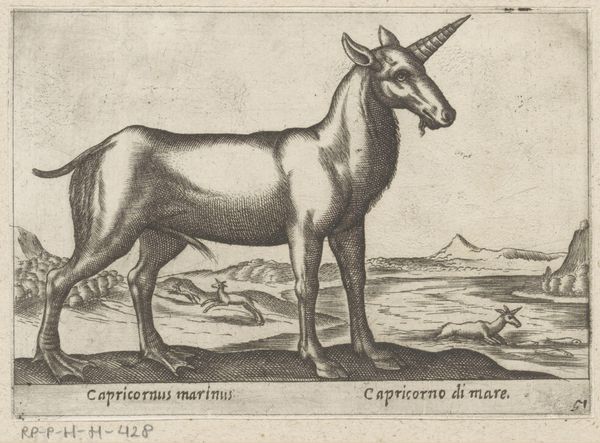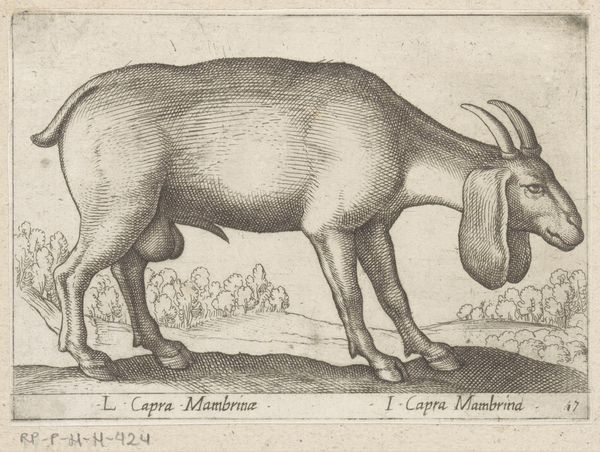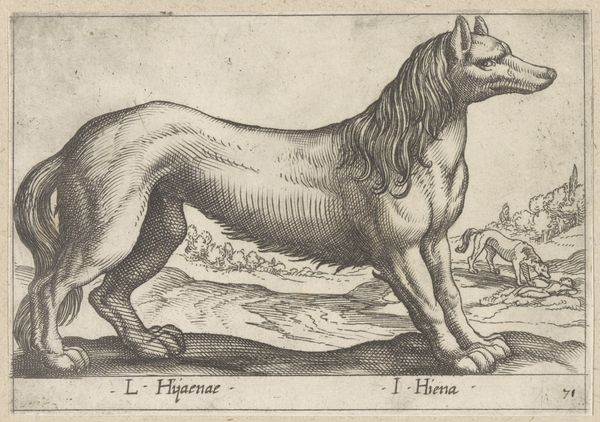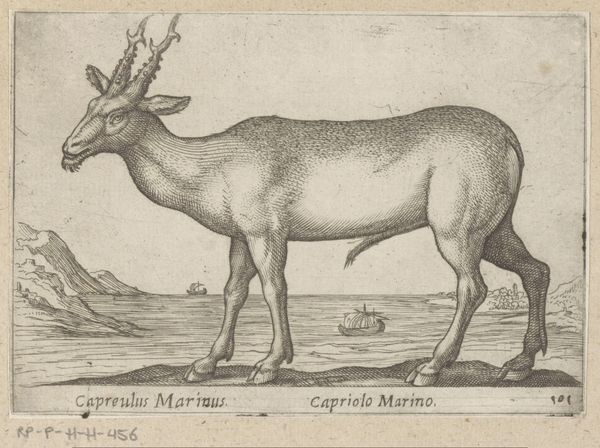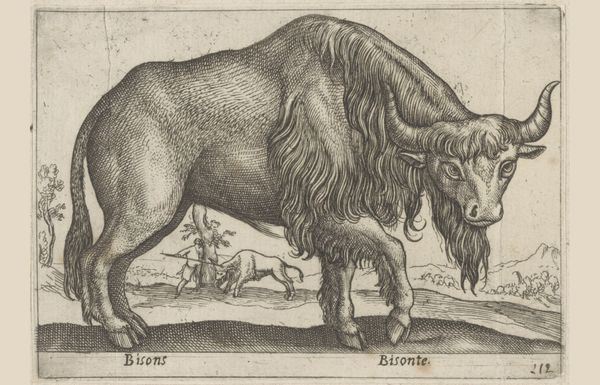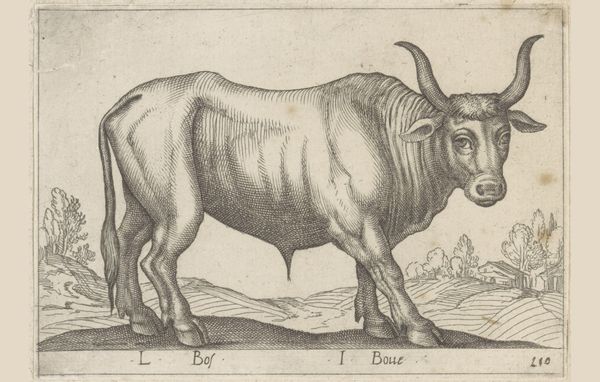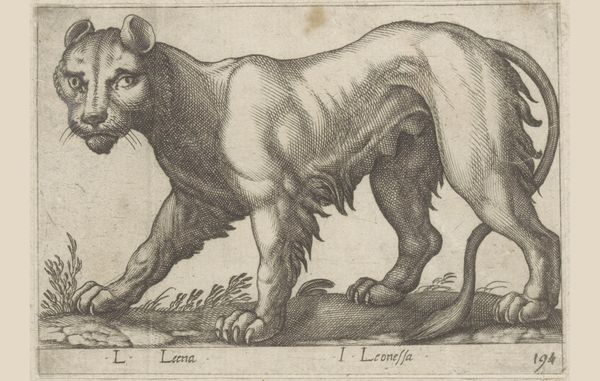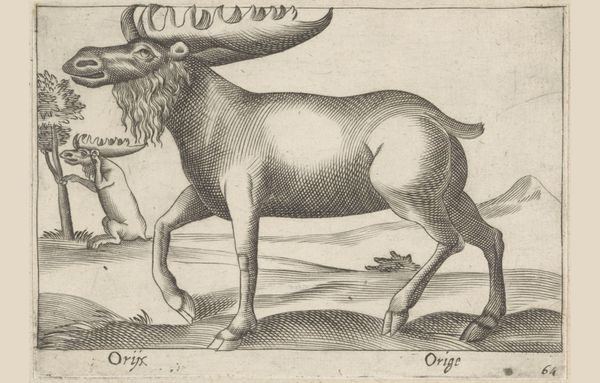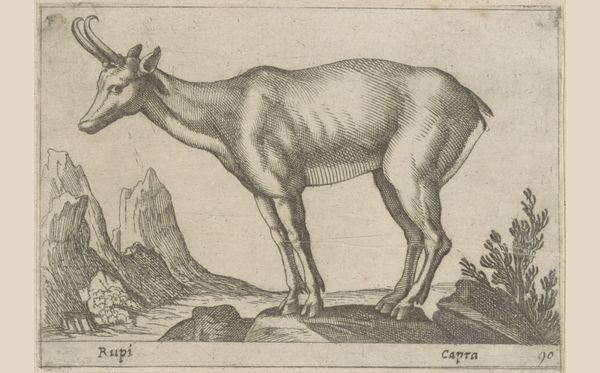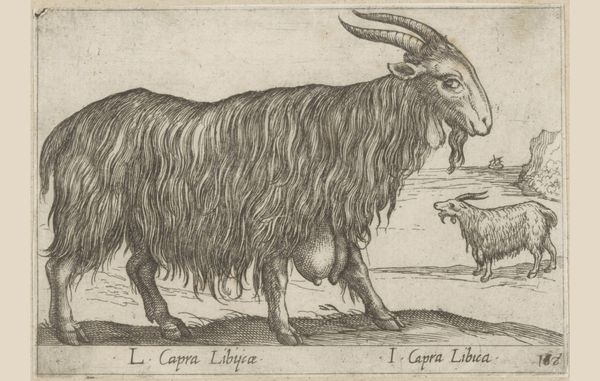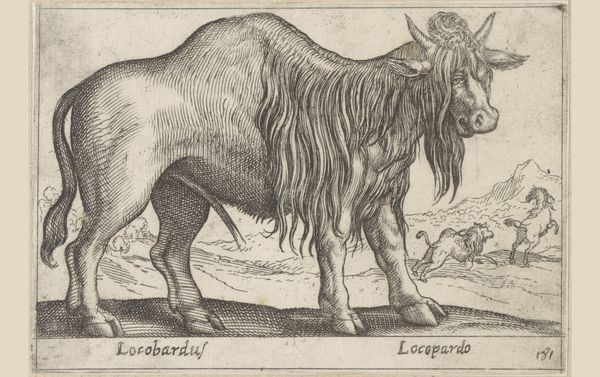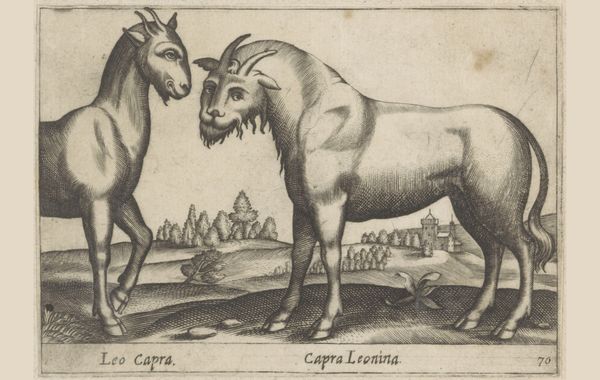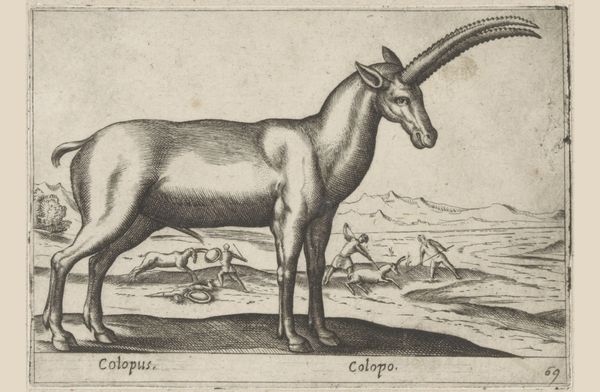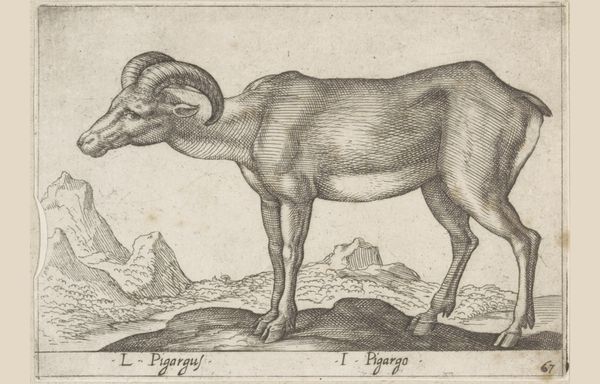
print, engraving
#
baroque
# print
#
old engraving style
#
landscape
#
figuration
#
history-painting
#
engraving
Dimensions: height 95 mm, width 137 mm
Copyright: Rijks Museum: Open Domain
This is Antonio Tempesta’s “Wolf met een hoorn” made with engraving. During the late 16th and early 17th centuries, European society was undergoing a transformation. Scientific discoveries began challenging long-held beliefs, and the rise of humanism placed a new emphasis on individual experience. In this period, the unicorn symbolized purity and grace, often associated with femininity and the divine. Tempesta’s "Wolf with a Horn" disrupts this symbolism. This image feels like a challenge to conventional representations. Combining the fierce and predatory nature of a wolf with the gentle symbolism of the unicorn creates a compelling visual paradox. Note also the similar creature grazing in the background. What does it mean to create a world in which unicorns are not unique? What happens to femininity and purity?
Comments
No comments
Be the first to comment and join the conversation on the ultimate creative platform.
